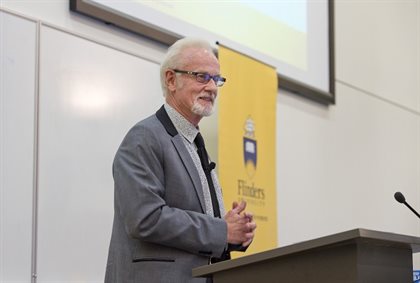When St George’s took on its first cohort in Graduate Entry Medicine in 2000, the course was the first of its kind. 21 years on, we are sharing the reflections of our current and former staff, alumni and students on their experiences on this ground-breaking course, and how it has changed over time.
In 2000, the concept of a fast-track route into Medicine existed in some other countries, such as Australia and Canada. Before the founding of the Graduate Entry Medicine programme at St George’s, the development team visited universities in Australia to see different approaches to Graduate Entry Medicine in action.
Professor Peter McCrorie - who was a founding member of the Graduate Entry Medicine team and the original Director of the course - says: “One which really stood out was Flinders University. It struck us as very community-based, with a real social focus. When designing our own course, we chose to work with Flinders and take inspiration from their programme, because it seemed to best reflect the ethos of St George’s.”
 Flinders University, which was the first university in Australia to have set up a dedicated Graduate Entry Medicine programme, worked in partnership with St George’s to share teaching resources and help implement the course here. We heard from Professor David Prideaux, retired Professor of Medical Education at Flinders University, Australia, about what it was like to work with St George’s on their Graduate Entry Medicine programme.
Flinders University, which was the first university in Australia to have set up a dedicated Graduate Entry Medicine programme, worked in partnership with St George’s to share teaching resources and help implement the course here. We heard from Professor David Prideaux, retired Professor of Medical Education at Flinders University, Australia, about what it was like to work with St George’s on their Graduate Entry Medicine programme.
Professor Prideaux, who was Head of the Department of Medical Education at Flinders from 1996-2011, says: “When St George’s approached us about working with them to develop their new course, we had been running our own Graduate Entry Medicine programme for four years. Our relationship with St George’s was a great two-way exchange and it was wonderful to work with like-minded individuals.
“Flinders University and St George’s felt a connection in terms of their approach to curriculum, as both universities are strongly embedded in the community. Both universities also had a focus on diversity and wanted to take an innovative approach by opening up Medicine to students from a wider range of backgrounds.”
Professor Prideaux shares that students from both universities also enjoyed the benefits of this partnership, with many taking part in overseas exchanges: “Our Australian students loved having the opportunity to go and work in London. For St George’s students, the opportunity to come to Flinders was also quite a unique one as they were able to experience what it was like to work in rural Australia.”
“Having been the first university in Australia to launch Graduate Entry Medicine, it was exciting to work with St George’s because it felt like doing something for the first time. We were able to share with St George’s what had worked for us and apply what we had learnt from setting up our own programme. This helped the team at St George’s to develop its own course material, but also meant that we could learn from St George’s by seeing how they worked and growing together.”